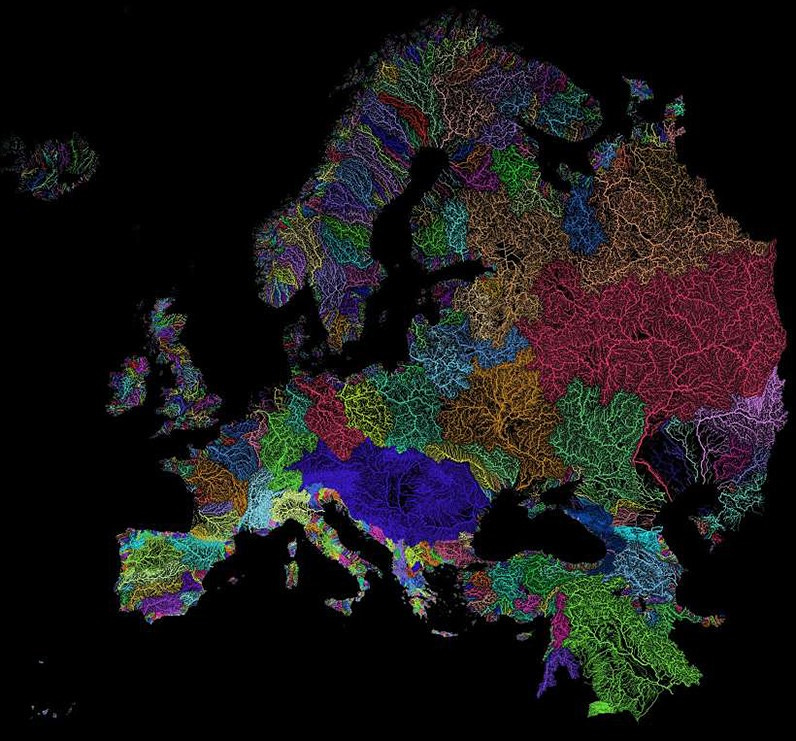Yeah, I know. The sunglasses make no sense.
According to a 2020 study published in the journal Nature, marine life could recover to healthy levels by 2050 if urgent action is taken. The study notes that marine life is "remarkably resilient" and that ecosystems could nearly fully recover by that time. The caveat is that there is limited time to achieve this change. Action needs to start now (in 2020). Oops.
The researchers identified nine components that are key to rebuilding the oceans: salt marshes, mangroves, seagrasses, coral reefs, kelp, oyster reefs, fisheries, megafauna, and the deep ocean.
The study estimates that it would cost about $10-20 billion a year to rebuild marine life by 2050.
The devil in the details.
That we can save the ocean, and by extension ourselves, is good news. We have taken some steps in the right direction.
In 2022, 196 countries agreed on the Kunming-Montreal global biodiversity framework. The framework aims to raise $200 billion by 2030 for biodiversity on land and in the ocean and targets protecting 30% of land and water considered important for biodiversity by 2030. As of 2022, that number was only about 17%.
In just the past month, The International Tribunal for the Law of the Sea (ITLOS) delivered an advisory opinion clarifying the specific obligations of States under the UN Convention on the Law of the Sea (UNCLOS) with respect to climate change. Under the decision, greenhouse gas emissions are now officially defined as ‘Marine Pollution’, and the 169 parties of the UNCLOS are now specifically obligated to “protect and preserve the marine environment” from:
- Human-caused pollutants (from land, vessels/infrastructure, and atmosphere)
- Impacts of climate change
- Ocean acidification
This is fantastic! Until you realize that this is an advisory opinion not enforceable in any way. As is often the case, only collective action can solve these problems, which requires businesses and governments to take the lead.
Businesses and governments will only do these things if we demand them.
How degrowth can help the ocean.
Degrowth is investing in things that are helpful and not investing in harmful things. Going down a degrowth path would involve cutting back on fossil fuel use, plastic use, pesticides, and chemicals that harm the ocean. This would also include cutting back on overfishing and investing in regenerative policies, and policies that leave the ocean alone and allow it to heal.
Climate Change: Climate change leads to the heating of the ocean and ocean acidification, both of which are making it difficult for marine life to survive. We need to reduce GHG emissions aggressively to allow marine habitats to recover. This will take efforts to put a true price on carbon and other GHG emissions to compensate for the damage done.
Pesticides/Chemicals: We use, and companies use pesticides and chemicals that run off into our rivers and streams every day. We need more education about the care of our own watersheds. Policies should require companies to follow strict rules about what chemicals are used that run off into streams, rivers, lakes, and oceans. Many of these chemicals come from sources we don’t even think about. For example, chemicals contained in many sunscreens used by beachgoers around the world are harmful to marine life. We should only use marine-safe sunscreens, and require companies to only produce safe versions of these products.
Nitrogen/Phosphorus Cycle
Nitrogen and phosphorus fertilizer runoff is a similar story. Fertilizers from agriculture containing nitrogen and phosphorus are increasing dead zones in our oceans.
Plastic Pollution
Current forecasts show that there is likely to be more plastic in the ocean than fish by weight by 2050. Microplastic is increasingly found in the seafood we eat. Marine life can get entangled in plastic pollution, may mistake plastic trash for food and over their lifetime accumulate toxic chemicals from plastics.
The answer is to use less plastic, repurpose and recycle what we do use, and clean up what is already in the ocean.
Overfishing
The number of overfished stocks globally has tripled in half a century and today one-third of the world's assessed fisheries are currently pushed beyond their biological limits, according to the Food and Agriculture Organization of the United Nations.
The solution is to do a better job of policing overfishing, with penalties that make the cost of overfishing not worth the risk.
Organizations that can help.
Below is a non-exhaustive list of organizations dedicated to helping our oceans. If you are looking for a way to start helping globally, these are a good start.
Ocean Conservancy – The Ocean Conservancy has programs on ocean justice, climate change, government outreach, protecting the Arctic, sustainable fisheries, and smarter ocean planning among others.
Surfrider Foundation – A network of activists who fight for plastic reduction, beach access, ocean protection, and clean water.
Oceana – An international advocacy group dedicated solely to ocean conservation. The mission of the group is to protect and restore oceans.
Nature Conservancy – The Nature Conservancy runs over 100 projects focused on ocean and ocean ecosystems around the world.
Coral Reef Alliance – The Coral Reef Alliance works with communities around the world to protect and restore coral reefs.
The 5 Gyres Institute – The 5 Gyres Institute looks to address the issue of plastic pollution in the ocean and remove waste from the ocean.
Parley for the Oceans – Parley for the Oceans aims to reduce plastic pollution in the ocean.
Greenpeace – Greenpeace has a long history of activism in the ocean and other environmental causes.
Marine Megafauna Foundation – As the name implies, the MMF is focused on protecting the giants of the ocean and the habitats that they call home.
Ocean Defenders Alliance – The Ocean Defenders Alliance works to clean up marine debris. There are likely local ODA efforts something near where you live if you are reading this and live near the ocean.
Think Global, Act Local.
If you want to do more than give money to one of these organizations, you can literally get your feet wet with local organizations in your area that are looking to protect your watershed.
Each of us belongs to a watershed, whose waters eventually lead out into the ocean. Your local organization (most likely a not-for-profit) that has taken on the protection of your watershed likely needs volunteers. You can also join the local bay, river, coastline organizations that do similar work.
For example, I live in Virginia, in the United States. I have done some volunteering for an organization in my hometown, but I could also help out with the James River Association, or the Chesapeake Bay Foundation if I wanted to help where the river meets the sea.
So first, find your watershed. Your watershed is simply an area of land that drains water into a specific body of water, such as a stream, river, lake, or ocean. Chemicals, plastics and pollution that start in your watershed can impact each body of water between you and the ocean, and ultimately the ocean itself.
Here is a great tool to get you started over at the visual capitalist: Beautiful Maps of the World's Watersheds (visualcapitalist.com) shows the different watersheds around the world. Below is Europe.
The smaller the organization, and the more local, the more likely it is that they need your help. So, find out more about your watershed, and get to saving the ocean.






Matt, I love your work and would like to publish some of it with full credit of course in my global warming newspaper but I won't do that without your permission. Would it be OK? I could tell people how to reach you on Substack, too. Please email me Yes or No at ionaconner@pa.net. Thanks.